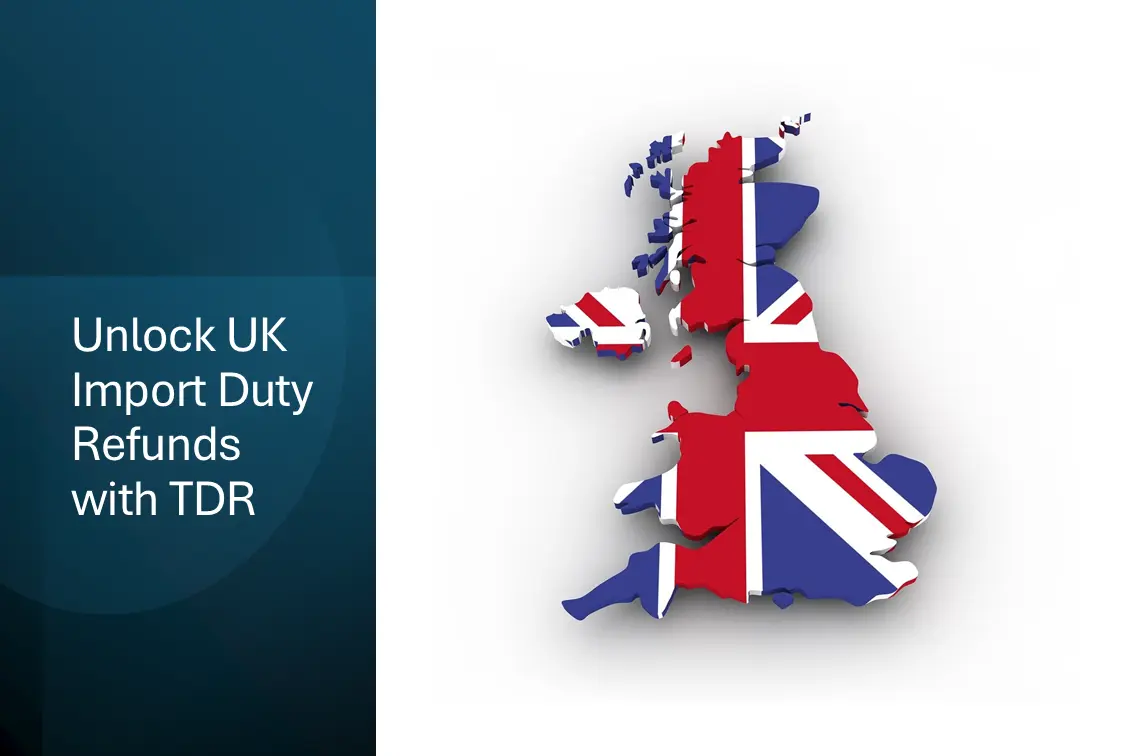Boosting UK Import Margins With Duty Drawback And Overpayment Audits

UK businesses are paying more in import duties and taxes than they need to, yet many never reclaim this money because the rules are complex and the process feels daunting.
What’s in it for UK importers
UK importers face rising freight, supplier and compliance costs, so any avoidable duty leakage has a direct impact on margins and competitiveness. HMRC allows repayment or waiver of customs debt in several situations, but these opportunities are often missed without a structured review of import flows and documentation.
For many importers, reclaiming historic overpayments and setting up robust processes going forward can mean six‑figure cash recoveries and a permanent reduction in landed cost. A specialist partner that understands both customs rules and data can turn what looks like an administrative burden into a recurring source of savings.
TDR’s value proposal
This first edition of the Trade Duty Refund Value Proposal series focuses on two complementary solutions designed for importers trading into the UK. Together, UK Duty Drawback and Duty Overpayment Audit address both duties that were never due and duties that can be reclaimed once goods are re‑exported, rejected or repurposed.
The goal is simple: ensure UK businesses only pay customs duties and import VAT when strictly necessary, and reclaim as much as possible where HMRC rules allow repayment or remission. TDR combines customs expertise, technology and a streamlined onboarding journey to make this process low effort and low risk for importers.
UK Duty Drawback explained
Duty drawback is a customs mechanism that allows importers to reclaim duties and, in some cases, import VAT when goods are later exported, destroyed under control or rejected because they are defective or do not meet contractual terms. HMRC guidance describes circumstances where it will repay or remit customs debt, for example when goods are rejected or when duties were not actually due on the original import.
For UK importers, this means that stock which does not stay in the UK market, or that is returned, written off or shipped abroad, may carry reclaim potential that is often left unused. By systematically linking import entries to export, destruction or rejection events, TDR’s UK Duty Drawback solution converts those flows into concrete refund claims.
When importers are eligible
HMRC can repay or waive import duties when an importer has overpaid, when goods are rejected as defective or non‑conforming, or when a customs declaration needs to be invalidated in specific circumstances. Claims must normally be made within defined time limits, typically up to three years for overpayments and shorter deadlines for rejected imports or withdrawn declarations.
In practice, importers may qualify if, for example, they exported goods in the same state, used them in the production of exported items, or had consignments damaged before customs clearance. Many companies also discover eligibility where origin, classification or value were mis‑declared, leading to excess duty payments that can later be corrected.
Duty Overpayment Audit
Alongside classic drawback, TDR offers a Duty Overpayment Audit that targets duties that should never have been paid in the first place. This service reviews historic customs declarations to identify incorrect tariff classifications, missed preferential duty rates, origin or valuation errors and other issues that created unnecessary duty exposure.
HMRC provides formal routes to reclaim such overpayments through the Customs Declaration Service (CDS). TDR’s audit translates these technical options into actionable cases, prioritising the largest opportunities within statutory time limits to maximise recoveries.
Benefits of the solutions
Both UK Duty Drawback and Duty Overpayment Audit create immediate cash benefits by turning past imports into refund opportunities and lowering future landed cost. Recoveries can free up working capital, strengthen pricing power and provide a buffer against currency volatility and supply chain shocks.
There is also a strong compliance upside: importers gain better visibility of their customs footprint and can make more informed sourcing and routing decisions.
Why UK importers choose TDR
TDR is carrier‑agnostic, working with any combination of integrators, freight forwarders and postal operators reflected in an importer’s historic records. This flexibility is crucial because most UK importers use multiple carriers and customs agents, and refund potential is often scattered across several data sources.
Importers do not need to manually compile complex files: once access is granted to the relevant HMRC systems, TDR’s team handles data extraction, consolidation and analysis. This reduces internal workload and ensures that technical documentation, from customs entries to supporting invoices, is aligned with HMRC expectations.
A no‑risk fee model
TDR operates on a success‑based fee structure, so professional fees are contingent on actually securing refunds. This means engaging TDR to review your UK imports does not require upfront investment and aligns incentives fully with the importer’s recovery objectives.
Because the team is led by UK duty and VAT specialists, claims are framed with a strong technical basis and supported by the right evidence, increasing the likelihood of HMRC approval. Importers benefit from expert representation without having to build equivalent in‑house capabilities.
Global coverage beyond the UK
Many importers that ship globally face similar duty reclaim opportunities in their main sales markets, not just in the UK. As a one‑stop shop for duty refunds worldwide, TDR can extend its audit and drawback approach to other jurisdictions where local regulations permit repayment or remission of customs charges. Check our full stack of solutions on our global value proposition page!
Coordinating reclaim strategies across multiple countries helps multinational importers standardise processes, reduce duplicate effort and identify structural savings in their global supply chain. This international perspective is especially valuable for e‑commerce and omnichannel businesses shipping to multiple destinations.
What working with TDR looks like
TDR has designed a streamlined onboarding journey so UK importers can start exploring reclaim potential quickly. The process starts with a short online questionnaire to determine whether UK Duty Drawback, Duty Overpayment Auditor a combination of both fits your profile.
From there, importers can either proceed directly or schedule a short call to review their situation and refine the scope. This conversation typically clarifies which customs regimes, commodity codes, carriers and time periods will be prioritised in the first phase of analysis.
Data access and claim execution
Once scope is agreed, TDR explains how to grant secure access to import and export history in the relevant HMRC portals. With this access in place, TDR extracts the necessary declaration data and reconciles it with export, rejection or destruction events, as well as supporting commercial documentation.
The team then prepares and submits reclaim files or supports your appointed customs agent in doing so, following HMRC guidance on repayment and remission claims. Throughout the process, you receive visibility on claim progress and expected refund timelines, while TDR manages HMRC queries where they arise.
Next steps for UK importers
Any UK importer with meaningful duty spend over the past few years should consider whether historic entries include overpayments, missed reliefs or reclaimable flows. Starting with TDR’s quick questionnaire or an introductory call provides a low‑effort way to size the opportunity and understand which solution is most relevant.
Once engagement is underway and data access is in place, the next milestone is often a first wave of successful claims, putting recovered duties straight back into your business. From there, TDR can help you embed better customs governance so duty savings become a recurring benefit, not a one‑off exercise.
